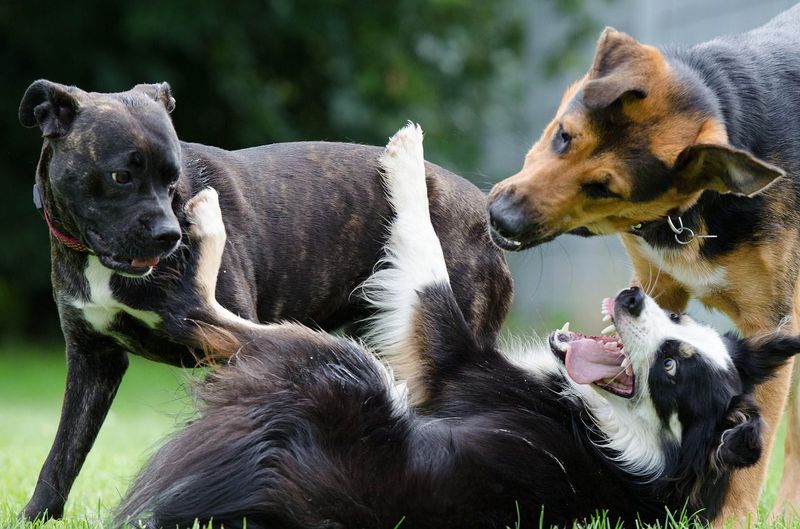Cesar Millan, widely known as the “Dog Whisperer,” has been a polarizing figure in the world of dog training. While his charismatic style and television presence have garnered millions of fans, many experts argue that some of his techniques are outdated and ineffective. In this article, we explore eleven specific training methods promoted by Millan that have sparked controversy and criticism from animal behaviorists and trainers alike. Whether you’re a seasoned dog owner or just curious about canine training, these insights offer an eye-opening perspective on what’s best for your furry companion.
Alpha Roll
The alpha roll, once a popular dog training method, involves forcing a dog onto its back to establish dominance. Many dog behaviorists criticize this technique as outdated and stressful. Imagine being flipped onto your back by a giant—it’s not exactly the epitome of comfort.
This approach can lead to fear rather than respect and may cause anxiety in dogs. Dogs learn best through positive reinforcement, not intimidation tactics. Modern training emphasizes cooperation, focusing on building trust and understanding.
The alpha roll is more likely to damage your bond with your pet than improve behavior. It’s time to rethink this age-old practice.
Leash Jerks
Leash jerking, a method used to correct a dog’s behavior by sharply pulling the leash, can cause more harm than good. Imagine getting yanked suddenly while enjoying a stroll—it’s jarring and unpleasant.
Experts argue that these abrupt corrections can lead to physical harm and emotional distress in dogs. Instead, teaching loose leash walking through patience and rewards fosters a more positive relationship.
Dogs react better to gentle guidance than forceful corrections. Repeated leash jerks may erode trust, causing anxiety.
Consider adopting a kinder approach, emphasizing communication over compulsion, to encourage well-mannered walks.
Flooding Technique
Flooding, a controversial method, involves exposing a dog to overwhelming stimuli until they become desensitized. Picture being thrown into a pool when you’re afraid of water—it’s frightening.
This technique can lead to heightened anxiety and fear rather than calmness. Many dogs don’t acclimate but become more stressed. Positive exposure therapy, where a dog is gradually introduced to stimuli, is preferred by experts.
Creating a controlled environment helps dogs adjust without panic. Flooding risks damaging trust and reinforcing fears, making it an ineffective choice for behavior modification.
Dominance-Based Commands
Dominance-based commands, such as using stern tones and body language to control dogs, have been heavily criticized. Imagine a boss who only shouts—it’s hardly motivating.
This approach can backfire, causing dogs to become anxious or rebellious. Positive reinforcement, using treats and praise, encourages cooperation and learning. Dogs, like people, respond better to kindness than threats.
Building a relationship based on respect and mutual understanding fosters a harmonious home environment. The era of heavy-handed dominance is waning as trainers embrace more compassionate methods. Consider speaking softly and carrying a big bag of treats.
Forced Submission
Forced submission, where a dog is physically manipulated into a submissive posture, can be both frightening and ineffective. Imagine being forced into a bow against your will—it’s humiliating.
Experts argue this method creates fear rather than respect in dogs. Encouraging voluntary submission through trust-building exercises is far more effective. Dogs are more likely to follow commands when they feel safe and understood.
Physical force can damage the bond between pet and owner, leading to behavioral issues. It’s time to let go of forceful methods in favor of empathy and patience.
Pinch Collars
Pinch collars, designed to control dogs by causing discomfort, have been a topic of heated debate. Imagine wearing a necklace that pinches every time you move—it’s distressing.
While intended to correct behavior, these collars can cause physical harm and emotional turmoil. Dogs often respond with fear rather than understanding. Experts advocate for positive reinforcement techniques that reward good behavior without pain.
A gentle leader or harness is a kinder alternative, promoting guidance rather than punishment. Reconsider the use of harsh tools that may harm both the body and the spirit.
Shock Collars
Shock collars, which deliver electric impulses to deter unwanted behavior, have sparked significant controversy. Imagine receiving a shock every time you make a mistake—it’s terrifying.
These devices can lead to anxiety and mistrust, with dogs associating shocks with random occurrences. Experts recommend humane training methods that focus on rewarding desired behaviors instead.
Building a relationship based on positivity fosters confidence and security in dogs. Shock collars are seen as a shortcut that overlooks the root causes of behavior. Opt for understanding and patience instead of electricity.
Muzzle Grabs
Muzzle grabs, where a dog’s snout is held to assert control, often lead to fear and confusion. Imagine someone grabbing your face to make a point—it’s disconcerting.
This technique can damage trust, leading dogs to feel threatened rather than secure. Positive reinforcement, encouraging desired behaviors with rewards, strengthens the bond between pet and owner.
Building trust through gentle guidance and understanding is far more effective than physical restraint. Dogs thrive in environments where they feel safe and loved, not dominated. Let kindness lead the way.
Pack Leader Mentality
The pack leader mentality, where humans dominate pets to establish hierarchy, often results in confusion and fear. Imagine being in a family where power dynamics overshadow love—it’s unsettling.
Dogs, considered family members, flourish under leadership that values cooperation and empathy. Experts suggest focusing on relationship-building rather than control.
Using respect and kindness fosters a nurturing environment, where dogs feel part of a caring pack rather than subjects of a hierarchy. Embrace teamwork and understanding over control and dominance.
Physical Correction
Physical correction, involving techniques like hitting or pushing, is widely condemned for its potential to harm dogs both physically and emotionally. Imagine being reprimanded with force—it’s distressing and confusing.
Positive training approaches that reward good behavior and ignore unwanted actions are more effective. Dogs are more likely to learn when they feel secure and supported.
Physical methods can erode trust and lead to more behavioral problems. It’s time to adopt strategies that prioritize the well-being and happiness of our furry friends.
Ignoring Body Language
Ignoring a dog’s body language—a crucial communication tool—can lead to misunderstandings and behavioral issues. Imagine trying to express yourself but being constantly ignored—it’s frustrating.
Dogs communicate discomfort, fear, and happiness through body language. Recognizing these signals helps in responding appropriately, fostering a stronger bond. Positive reinforcement and attention to cues ensure a satisfying relationship.
Acknowledge what dogs express, and you’ll build trust and prevent issues before they arise. Observing and respecting these signals is key to harmonious coexistence.











